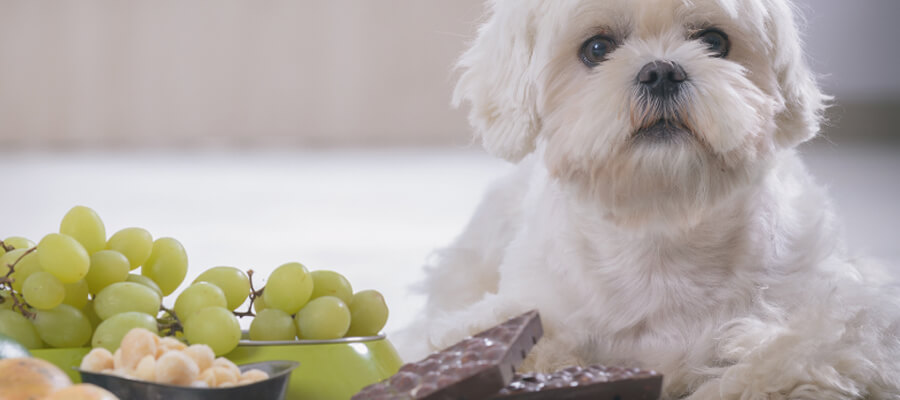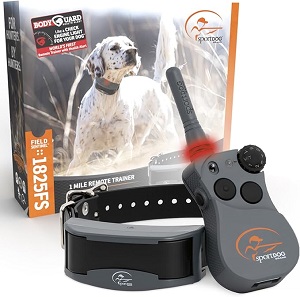
Common Toxic Foods for Dogs: What to Avoid
Common Toxic Foods for Dogs: What Every Dog Owner Should Avoid
Common Toxic Foods for Dogs: What to Avoid
As a dog owner, it's important to be aware of the foods that are safe for your pet and those that could potentially harm them. Many common foods that are perfectly fine for humans can be toxic or even life-threatening to dogs. Understanding which foods to avoid can help you protect your dog from accidental poisoning. This guide covers some of the most common toxic foods for dogs and provides insights on how to keep your canine companion safe.
1. Chocolate
Why It’s Toxic:
Chocolate contains theobromine and caffeine, both of which are toxic to dogs. Dark chocolate and unsweetened baking chocolate have higher concentrations of these chemicals, making them more dangerous than milk chocolate.
Essentials for Your Newly Adopted Pet
Welcoming a shelter pet into your life is a beautiful journey. Here are some handpicked items to help your new friend feel safe, loved, and right at home:
Symptoms of Chocolate Poisoning:
- Vomiting
- Diarrhea
- Rapid breathing
- Increased heart rate
- Seizures
- Muscle tremors
What to Do:
If your dog ingests chocolate, contact your veterinarian immediately. Treatment will depend on how much chocolate was consumed and how long ago it was eaten.
2. Grapes and Raisins
Why They’re Toxic:
Grapes and raisins can cause kidney failure in dogs, though the exact substance that triggers this reaction is still unknown. Even a small amount can be dangerous.
Symptoms of Grape/Raisin Toxicity:
- Vomiting (often within a few hours of ingestion)
- Lethargy
- Loss of appetite
- Diarrhea
- Abdominal pain
- Increased thirst and urination, leading to kidney failure
What to Do:
If your dog consumes grapes or raisins, seek veterinary care immediately, as early intervention can prevent permanent kidney damage.
3. Onions and Garlic
Why They’re Toxic:
Both onions and garlic contain compounds (thiosulfate) that can damage red blood cells, leading to anemia in dogs. Garlic is more toxic than onions, but both are dangerous, whether raw, cooked, or in powdered form.
Symptoms of Onion/Garlic Toxicity:
- Weakness
- Lethargy
- Pale gums
- Decreased appetite
- Red or brown urine
- Vomiting and diarrhea
What to Do:
Contact your vet if you suspect your dog has ingested onions, garlic, or related plants (like leeks or chives). Blood tests may be necessary to assess damage to red blood cells.
4. Xylitol (Sugar Substitute)
Why It’s Toxic:
Xylitol is a sugar substitute found in many sugar-free products like gum, candy, and baked goods. In dogs, xylitol causes a rapid release of insulin, leading to a dangerous drop in blood sugar (hypoglycemia). It can also cause liver failure.
Symptoms of Xylitol Poisoning:
- Vomiting
- Weakness
- Tremors
- Seizures
- Loss of coordination
- Coma
What to Do:
If your dog consumes xylitol, it’s a medical emergency. Seek veterinary care immediately, as symptoms can appear quickly. Your vet may induce vomiting and administer glucose or other treatments to stabilize blood sugar levels.
5. Alcohol
Why It’s Toxic:
Alcohol affects dogs similarly to how it affects humans, but it takes much less to cause serious harm. Even small amounts of beer, wine, or hard liquor can lead to alcohol poisoning, which can be life-threatening.
Symptoms of Alcohol Poisoning:
- Vomiting
- Diarrhea
- Difficulty breathing
- Tremors
- Low body temperature
- Abnormal blood acidity
- Coma
What to Do:
Never give your dog alcohol, and keep drinks out of reach. If your dog consumes alcohol, contact your veterinarian immediately.
6. Avocado
Why It’s Toxic:
Avocados contain a toxin called persin, which is harmful to dogs in large quantities. While the flesh of the avocado is generally safe in small amounts, the pit, skin, and leaves contain higher levels of persin and can be dangerous if ingested.
Symptoms of Avocado Poisoning:
- Vomiting
- Diarrhea
- Abdominal pain
- Difficulty breathing (if the pit causes an obstruction)
What to Do:
If your dog eats part of an avocado or swallows the pit, contact your vet. While mild symptoms may resolve on their own, a swallowed pit can cause a life-threatening blockage in the intestines.
7. Caffeine (Coffee, Tea, Energy Drinks)
Why It’s Toxic:
Caffeine is a stimulant that affects the central nervous system and heart. Dogs are much more sensitive to caffeine than humans, and even a small amount can cause toxicity.
Symptoms of Caffeine Poisoning:
- Restlessness
- Rapid breathing
- Heart palpitations
- Muscle tremors
- Seizures
- Vomiting
What to Do:
Keep coffee, tea, energy drinks, and other caffeinated products away from your dog. If your dog consumes caffeine, contact your veterinarian immediately.
8. Macadamia Nuts
Why They’re Toxic:
Macadamia nuts can cause weakness, vomiting, and tremors in dogs. The exact mechanism of toxicity is unknown, but even a small amount can cause significant symptoms.
Symptoms of Macadamia Nut Poisoning:
- Weakness (particularly in the hind legs)
- Vomiting
- Tremors
- Increased body temperature
- Lethargy
What to Do:
If your dog eats macadamia nuts, contact your veterinarian. Most dogs recover without severe complications, but symptoms can be alarming and uncomfortable for your dog.
9. Cooked Bones
Why They’re Dangerous:
While raw bones can be beneficial for dental health, cooked bones can splinter and cause choking or severe injuries to the digestive tract. These splinters can become lodged in the throat, stomach, or intestines, causing blockages or tears.
Symptoms of Bone Ingestion:
- Choking
- Vomiting
- Lethargy
- Difficulty defecating
- Abdominal pain
What to Do:
If you suspect your dog has eaten a cooked bone, seek veterinary care. Depending on the severity, surgery may be required to remove any blockages or repair tears in the digestive tract.
10. Raw Dough (Yeast Dough)
Why It’s Dangerous:
When a dog eats raw yeast dough, the dough can expand in the stomach, causing bloating and discomfort. Worse, as the yeast ferments, it produces alcohol, which can lead to alcohol poisoning.
Symptoms of Yeast Dough Ingestion:
- Bloating
- Vomiting
- Disorientation
- Lethargy
- Seizures (due to alcohol poisoning)
What to Do:
If your dog ingests raw dough, it’s a medical emergency. Take your dog to the vet immediately to prevent further expansion and fermentation of the dough.
11. Fat Trimmings and Greasy Foods
Why They’re Dangerous:
Fat trimmings, whether cooked or raw, can lead to pancreatitis in dogs. This is a serious condition that causes inflammation of the pancreas and can lead to digestive issues, abdominal pain, and other complications.
Symptoms of Pancreatitis:
- Vomiting
- Diarrhea
- Abdominal pain
- Lethargy
- Loss of appetite
What to Do:
Avoid giving your dog fatty or greasy foods. If your dog shows signs of pancreatitis, contact your veterinarian for immediate care.
Conclusion
Keeping your dog safe from toxic foods is an essential part of being a responsible pet owner. Many common household foods can pose serious health risks to dogs, so it’s important to be vigilant about what they eat. If you ever suspect your dog has ingested something toxic, contact your veterinarian immediately or call a pet poison helpline for advice.
By being aware of these toxic foods and taking precautions, you can help prevent accidental poisoning and ensure your dog stays healthy and happy.
Affiliate Products
We may earn a small commission when you shop through our links — it helps us keep sharing love and care for every dog out there, at no extra cost to you.
Up to 75% Discount

Dog Collar with Health Monitoring
BUY NOW »
Up to 55% Discount

Luxury Faux Furhuge Napping Bed
BUY NOW »

